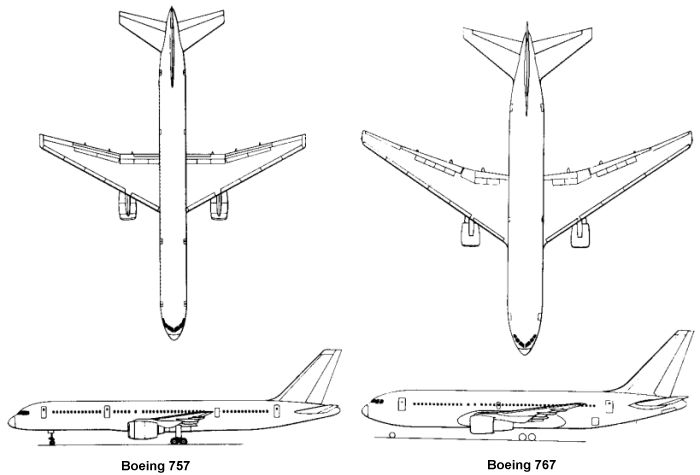|
||||||||||
|
|
||||||||||
|
||||||||||
|
|
||||||||||
The second question is a bit tougher. First of all, I am a little surprised that the 757 would be equipped with a mach speed trim control and the Boeing 767 would not. I'd suspect that the two are similar enough that both would either need or not need such a device. But assuming that you are correct, I can think of a few factors that might play a role.
The reason an aircraft would need a mach speed trim control in the first place relates to the behavior of its wing center of pressure as speed changes. The center of pressure (Cp) is the point on a wing where the lift force acts. In low subsonic flight, the center of pressure is usually pretty stable for a conventional airfoil shape and is located about one-quarter of the way back from the wing leading edge. But as speed increases, the center of pressure begins moving aft, particularly at transonic speeds starting at about Mach 0.7. As the Cp moves aft, the moment arm between it and the elevator decreases. This movement makes the elevator less effective in providing pitch control. The difference in location between the Cp and the center of gravity (located in front of the Cp) causes the aircraft nose to pitch down, so more elevator trim is required to keep the aircraft level.

Now that we know what mach speed trim is, the question becomes why would one aircraft need it and the other not. What this question suggests is that there is no movement of the Cp on the 767, or at least much less than there is on the 757. Cp travel is usually associated with the wing airfoil section, but I believe that both aircraft use the same airfoils, or ones similar enough that their Cp movement should be similar. Another method of reducing Cp movement is to use wing sweepback. This is indeed one major difference between the wings of the two aircraft. The 757 wing is swept 25° while the 767 wing is swept 31.5°. That 6.5° difference seems pretty small, but I think it likely plays a major role.
Your theory on the wing's location might also have some effect, but I don't think it would be very significant. The 767 also has a thicker wing, greater wing chord, and a larger horizontal tail than the 757. A combination of some or all of these variables may have the effect of making the aircraft less sensitive to any Cp movement.
Sorry we couldn't provide a more definitive answer, but we do not have enough information at this time.
- answer by Greg Alexander, 17 August 2003
Read More Articles:


|
Aircraft | Design | Ask Us | Shop | Search |

|
|
| About Us | Contact Us | Copyright © 1997-2023 | |||
|
|
|||